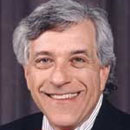Red flag warning on kids and smart phones long overdue
Published in Lifestyles
We have smoke detectors that warn of fire, dashboard icons that warn of low fuel and dying batteries, and health hazard warnings are printed on every pack of cigarettes.
In 2024 we were given a clear and resounding warning for cell phones. It came in the form of a thick book titled “The Anxious Generation” (How the Great Rewiring of Childhood Is Causing an Epidemic of Mental Illness) by Jonathan Haidt.
The book has been tagged a top book by the Wall Street Journal, Washington Post and New York Times, and awarded the Nonfiction Book of the Year by Goodreads.
When I read the book, I underlined paragraph after paragraph and tagged page after page with Post-it notes. I became hooked on underlining and tagging in a book about becoming hooked.
Haidt thoroughly—and chillingly—connects the dots between the horrific rise in mental illness among adolescents and teens, and the rise in popularity of social media on smart phones. He makes an iron-clad case that social media is inappropriate for children and that puberty is a vulnerable and impressionable time, particularly for girls.
Social media platforms are designed to be addictive. A dopamine rush kicks in when users receive likes, comments and new followers. Like Pavlov’s dogs conditioned to salivate at the sound of a bell, users keep coming back for more.
Haidt points out that the problem is not just what social media does, but what social media keeps people from doing. Compared with their counterparts in the 2000s (prior to the common use of all the screens), today’s teens are less likely to go out with friends, less likely to get a driver’s license, less likely to play youth sports and more likely to be alone on their phones. Some teens sleep with their phones, texting throughout the night.
It starts early. Who hasn’t observed toddlers, in airports, grocery carts and strollers, mesmerized by moving screens? Not that the tykes are scrolling on TikTok, but the brain patterning for rapid flashing, constantly changing images is being imprinted.
Not long ago, I saw a clip of a basketball game featuring a halftime contest where mothers lined up on one end of the court and their babies, who were still crawlers, were lined up about 10 yards away. It was a race to see which babies would get to their mothers first.
How did the mothers entice them? By waving their cell phones. The little critters’ eyes lit up, they smiled from ear to ear and laid tracks.
What sets Haidt apart from simply screaming “Fire!” is that he identifies concrete ways to douse the flames:
--Say no to smartphones before high school. Flip phones are fine in middle school for safety and staying connected, but no smart phones.
--Say no to social media before age 16. Our friends Down Under in Australia just passed a law to that effect. Once kids are through adolescence and capable of more mature decision making, they are less likely to become addicted.
--Haidt also makes a case for phone-free schools. Finally, he points a finger at adults. Warnings to kids have no power if they are of the “Do as I say, not as I do” variety. Adults of every age and generation are powerful influencers when it comes to cell phone use.
Haidt is the giant red flag on the beach, snapping in the wind, signaling the presence of dangerous and life-threatening tides.
We would do well to heed the warning.
©2024 Tribune Content Agency, LLC
























Comments